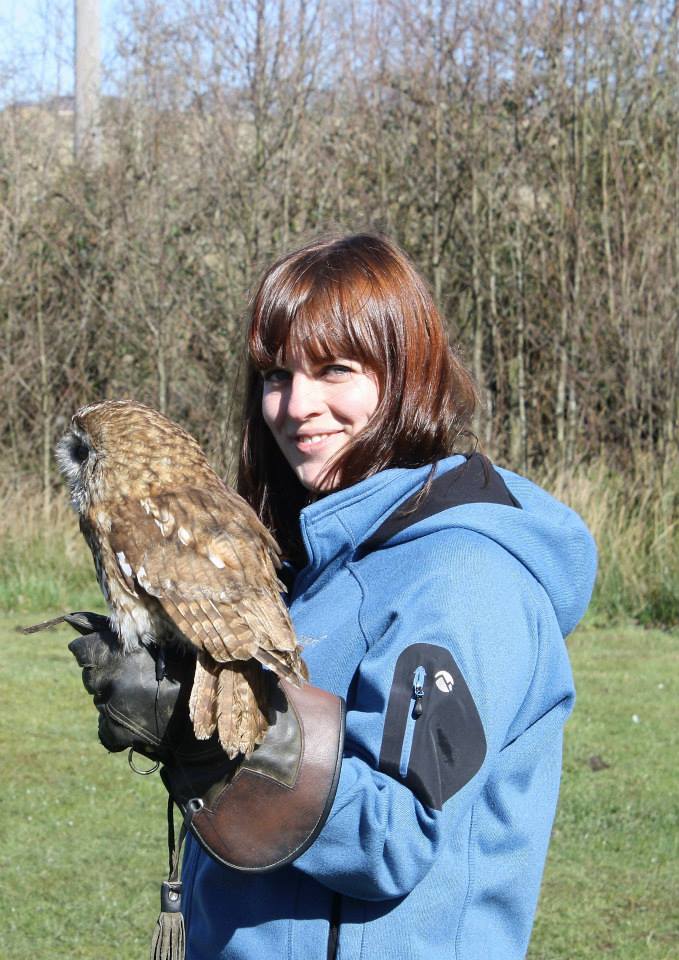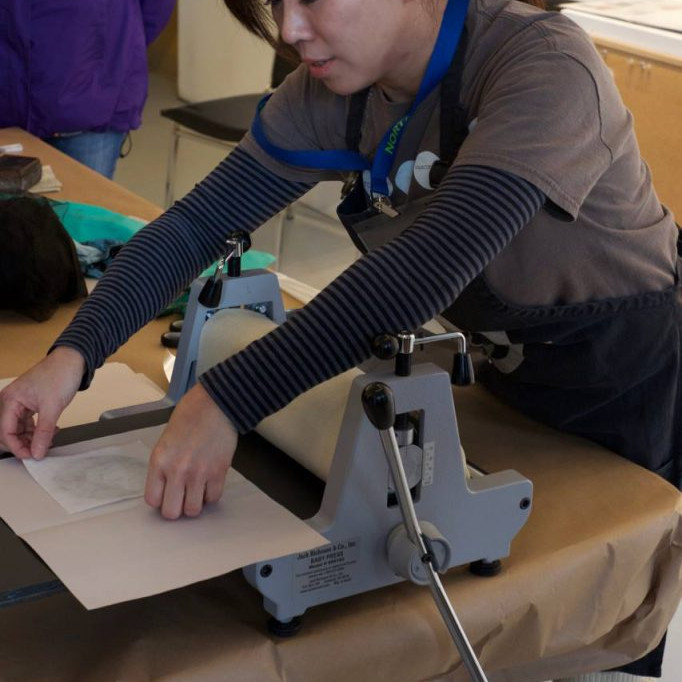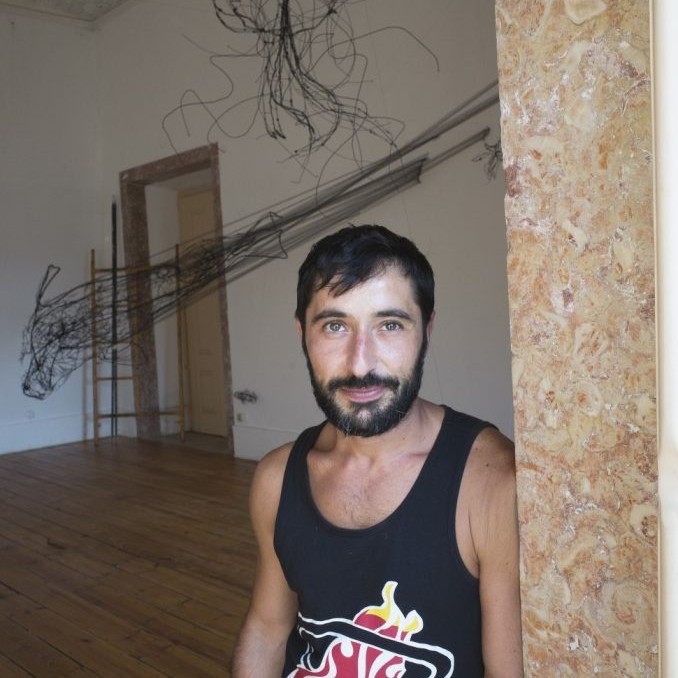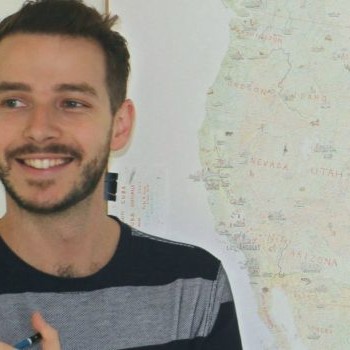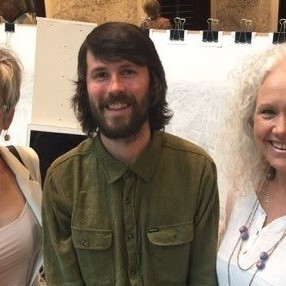Hannah Longmuir Countryside Illustator
Expand on the technique you use to bring both delicacy and calm to your images?
At the moment I work almost exclusively in pencil. I find it a very satisfying medium to work in – it is accessible and flexible, and allows you to make both precise and expressive marks. When I work on a drawing, I try to make marks which reflect the feeling I want the drawing to have. I’m drawn to work and places and images that are quiet and calm and subtle, and I try to create a sense of that in my drawings.
Drawing in pencil is a slow practice, and I love to watch the work emerge gradually from the page. Each mark I chose to make builds up the drawing and tells a piece of the story.
From the tiniest field mouse you add character, expand on this aspect of your work?
I would say that I look for and record character, rather than add it. I usually find that my subject – mouse or fence post or sky – is quite beautiful and interesting enough without me adding a lot to it. What I try to do is to draw attention to a thing, especially if it is something that isn’t often paused to be looked at.
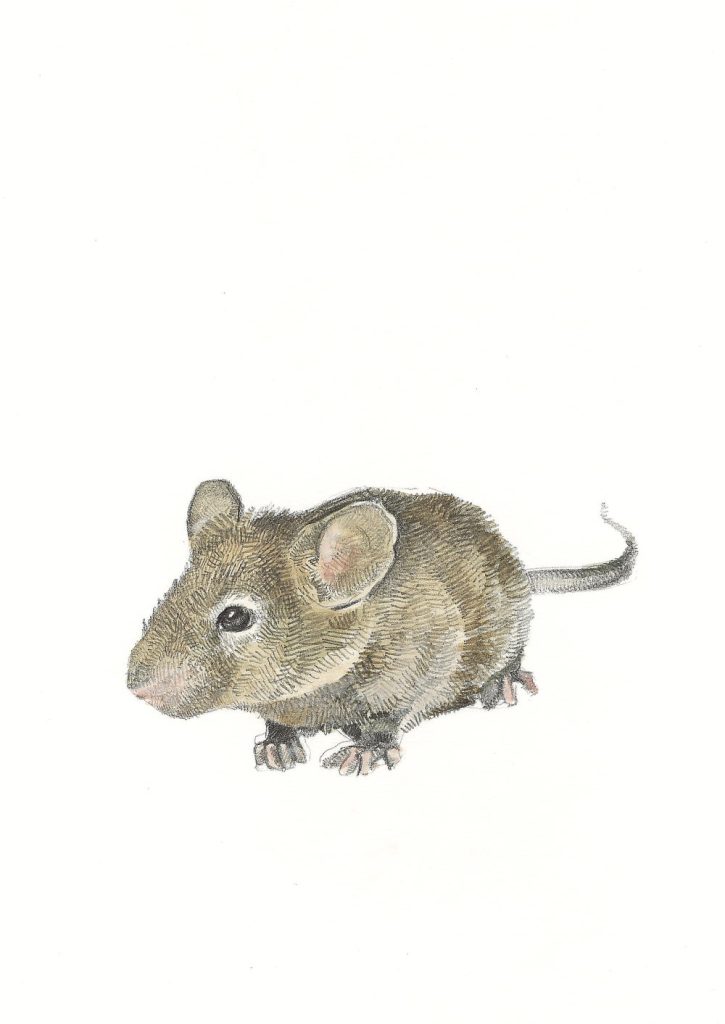
‘Field Mouse’
Discuss your butterflies both 2D and 3D and when and why you chose the dimension?
My little 3D pop up butterflies are my newest project and I am really enjoying working on them. I had been looking for a reason to draw butterflies for a while – because inside I am still a 5 year old girl – but had been reluctant to take the subject on because they have been very well recorded in art! I returned to the idea, though, because I wanted to make little 3D butterflies in the style of collector’s samples in box frames.
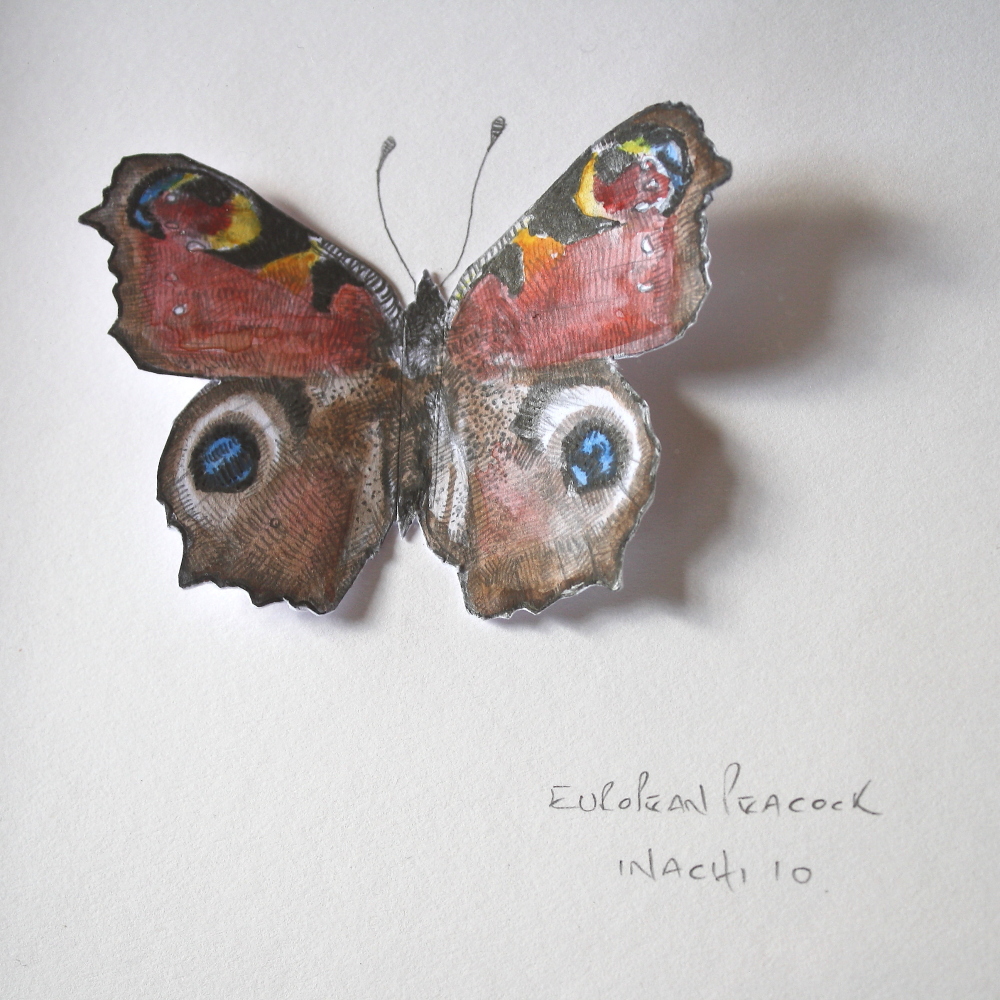
‘European Peacock’
Drawing something is the best way to learn about it. I drew the wing spans of the butterflies the size they would be in reality, so my pencil had to make tiny marks to represent the wonders of the butterfly’s wing.
Discuss your own card collection and how it helps you with your art work?
I’ve always loved stationery and letter writing – everything paper: cards, notebooks, envelopes, stickers… – and I really enjoying developing my drawings into paper goods which I then sell online, through shops, and at markets. It’s a two-way street, sometimes I draw specifically for a product, other times a drawing just works well when it is transferred onto a card or a sheet of writing paper. Printing the products, packaging them and marketing them satisfies a different part of my brain. I like the variety it brings my working week.
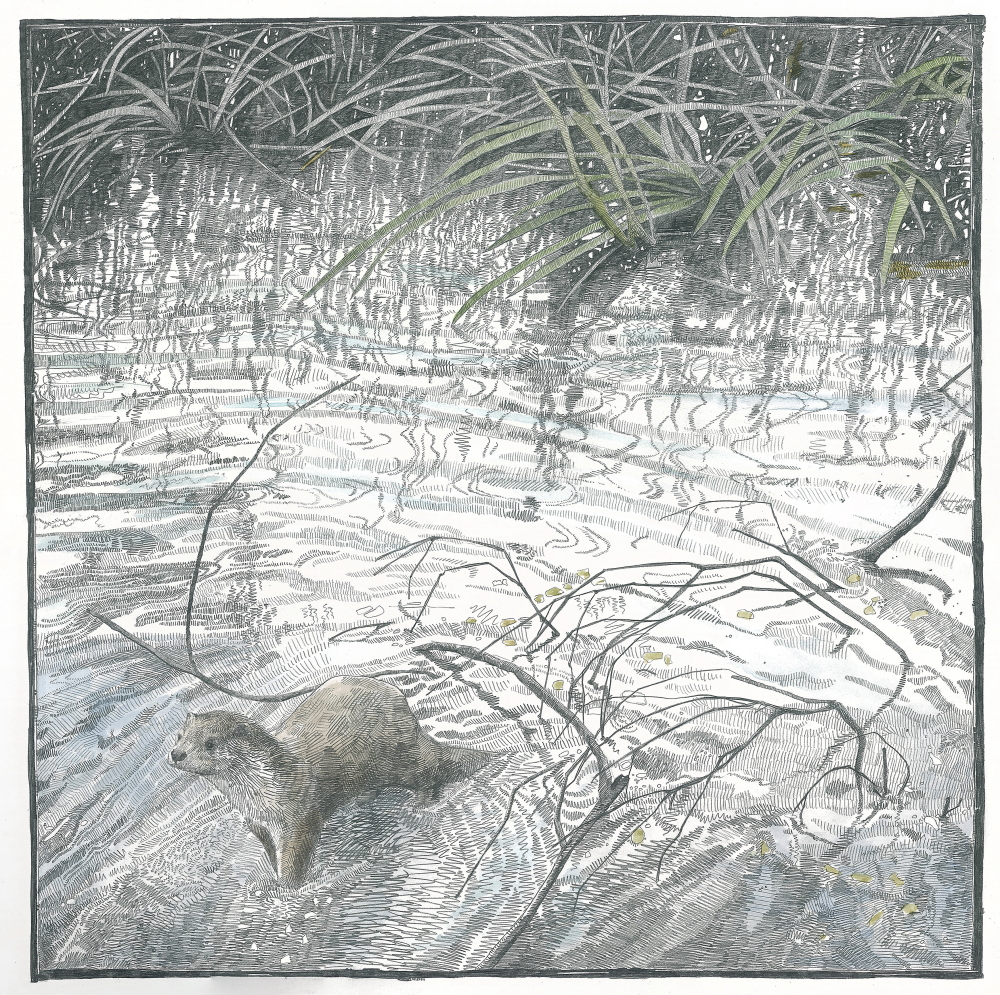
‘Texture in the Water’
Less is so important in your work expand on this?
Less is so important! I like to keep things simple – I only use three basic materials – paper, pencil and watercolours. I like simple, honest images. A few marks can describe a lot: light and darkness, planes of form, texture. By varying the qualities of the lines that I make – the length of the lines, their closeness to each other, the quantity, the spacing, whether they cross over each other and if so at which angle, the direction of the lines, whether the lines are rigid or flowing – I can describe something in detail.
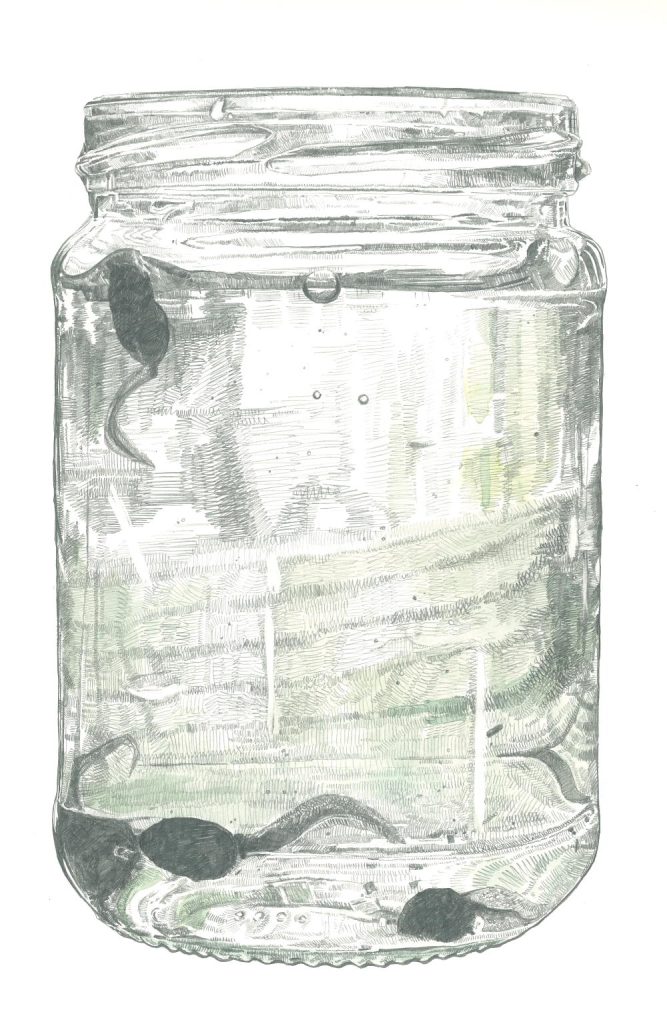
‘Tadpoles in a Jar’
In 2015 you produced a calendar with this be an annual project?
Yes. I’m currently designing my 2016 model, and this will be the third year I’ve made a calendar. They have been really popular.
Each month reflects the wildlife which is active in that month – the arrival of the swallows in April, the prolific goldfinch in May, vivid autumnal colours on the sycamore leaf in November. I use hand-stencilled lettering for the month titles, and handwritten dates, to give the calendars quite a personal feel.
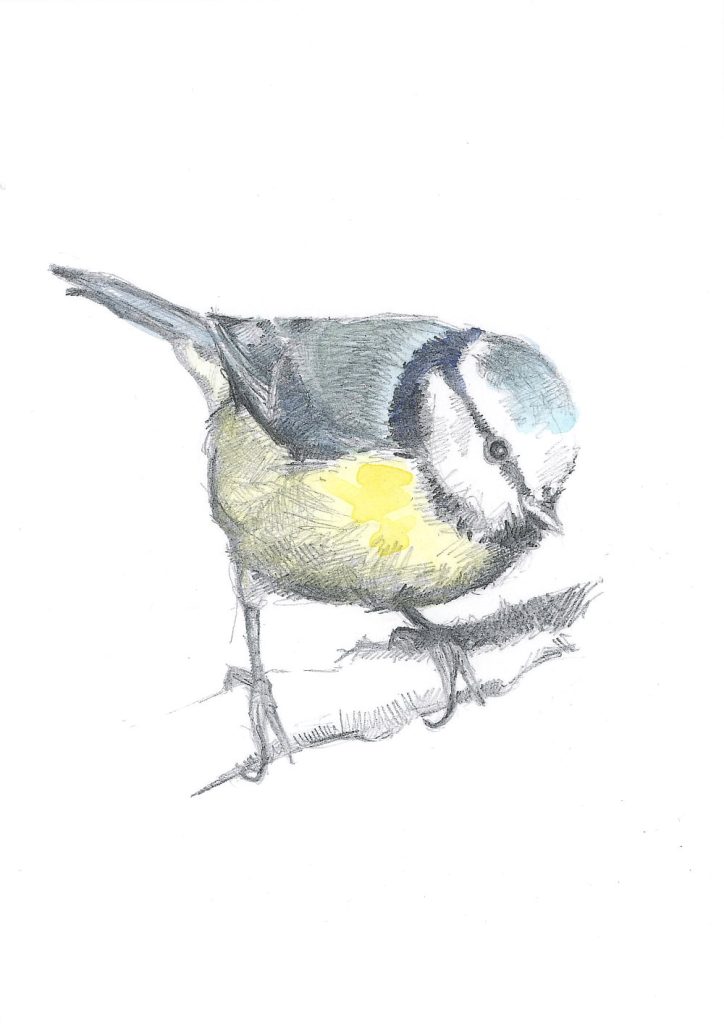
‘Bluetit’
In you wildlife work you make a point of ‘capturing the moment’ discuss?
I try to use marks which will tell of the vitality of the animal or bird, its quickness or gentleness. For example, my Roe Deer. She is gentle, but alert, muscles tense and ready to move at any moment, listening and watching. Her eyes are bright. This tells a little of the feeling you get when you disturb a deer when you are out walking. Before you’ve even spotted her she is bounding across the field, agile over fences, white rump bobbing away. It’s that moment; that encounter, which I try to describe just a little.
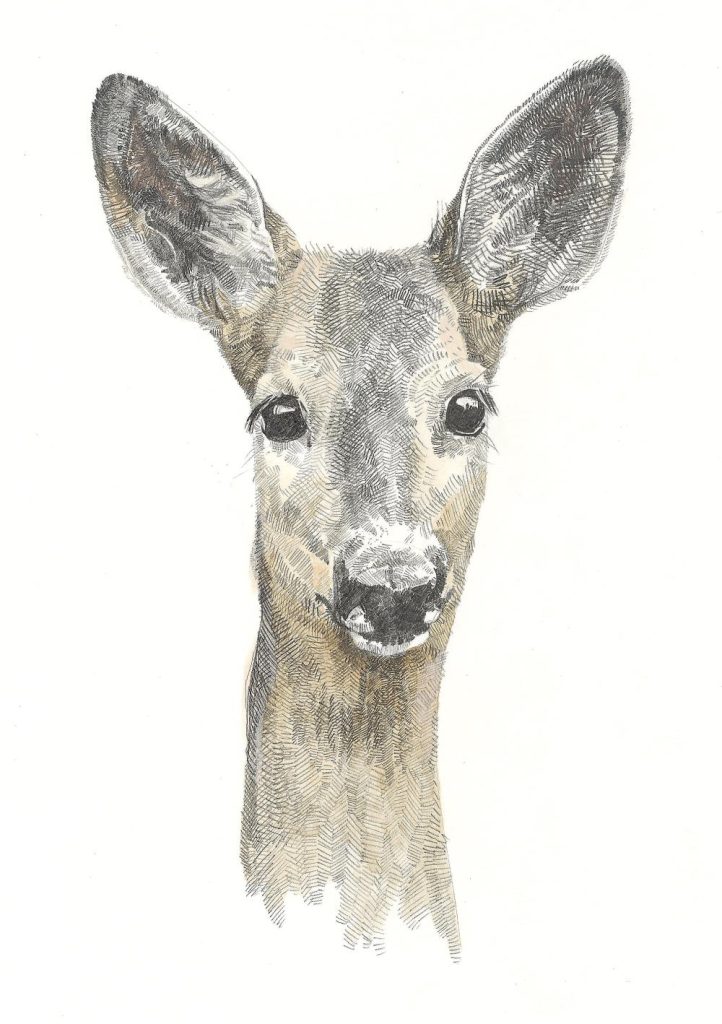
‘Roe Deer’
On the flipside, your work with trees you have ‘captured the elements’ discuss?
It’s the ancientness and the stillness of woodland and of trees that fascinate me. One of my most recent pieces is ‘Ancient Wood III’ which depicts a beech tree under a dense canopy, with dappled light breaking through. The tree is still, almost timeless, but under its leaves and on the forest floor are thriving, vital ecosystems.

‘Ancient Wood III’
Your work from a very unusual place a small log cabin. Can you tell us about it?
I love my cabin! It’s in the garden of my cottage, and it was built for me by my very clever boyfriend. It is just little, but it allows me a separate space to work in, which has been transformative! The starlings sound as heavy as elephants when they run across the ceiling. My dog, Buddy Bear, sleeps on the rug while I work.
How important is place to you as an artist?
Place is incredibly important to me. I find most of my inspiration while on dog walks around the lanes, hedgerows, fields and woodlands near the village.
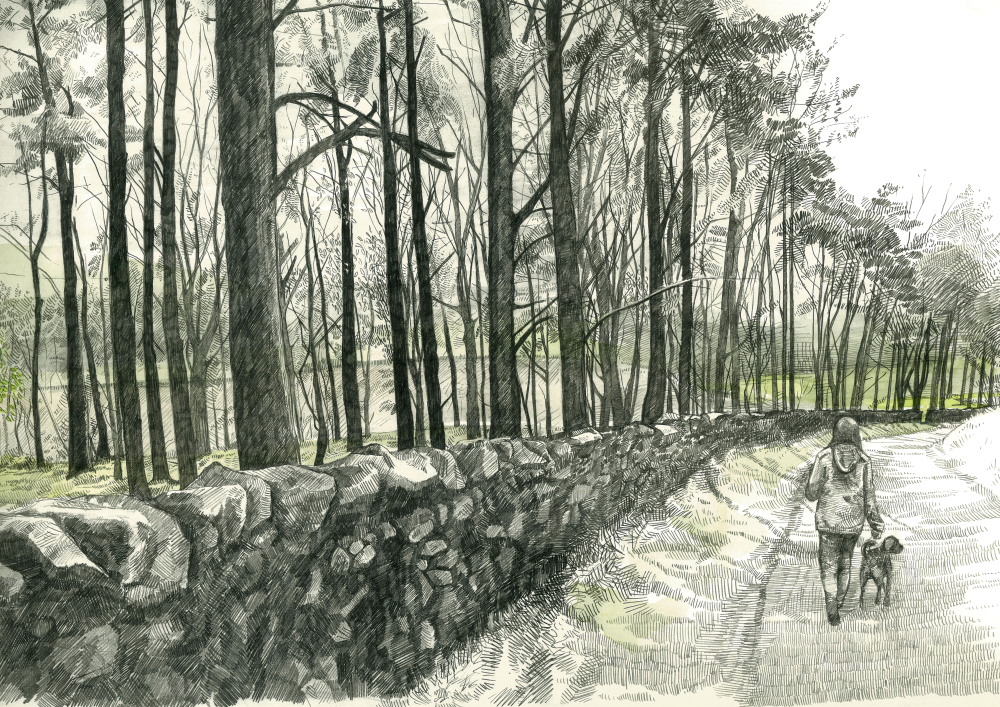
‘The Hownam Road’
I’ve been exploring this countryside since I was a little girl, bringing feathers and toads and pebbles home to draw.
Do you always carry a sketch book?
Yes I do, and I take a lot of photographs as well. I’m always adding to my library of images and sketches so that they are there when I need reference material.
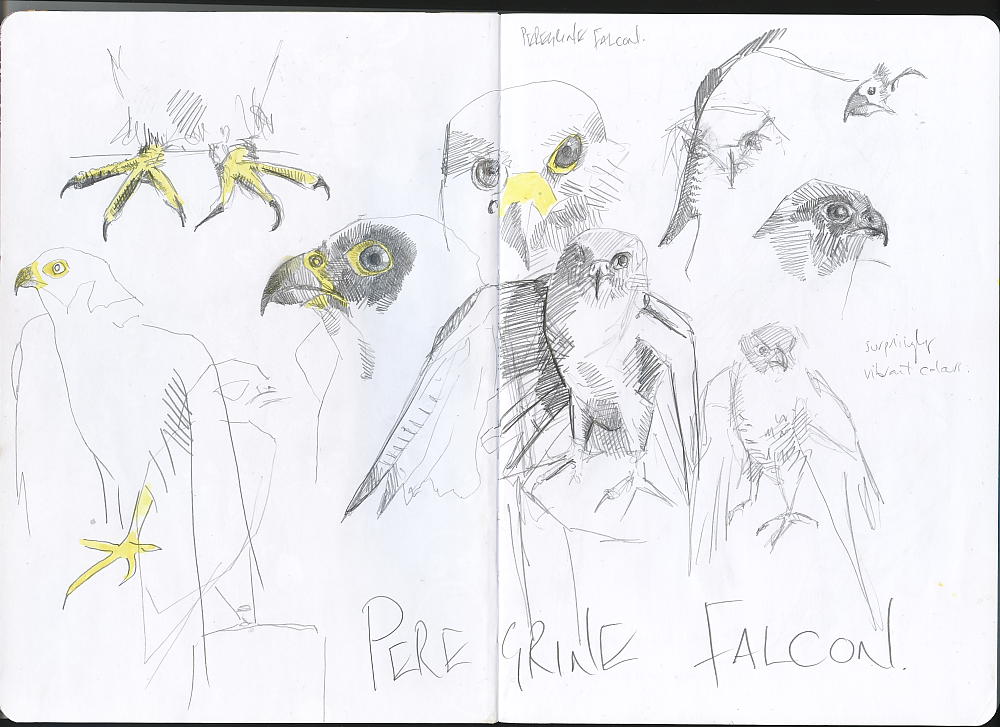
Sketchbook – Peregine Falcon
One of my New Year’s Resolutions for this year was to draw in my sketchbook more regularly as I do believe it is a good discipline to have. It is going quite well but there is room for improvement!
Contact details.
hannah_longmuir@hotmail.com
www.hannahlongmuir-artist.co.uk
Hannah Longmuir, Scottish Borders
Interview by Deborah Blakeley, June 2015
Think a colleague or friend could benefit from this interview?
Knowledge is one of the biggest assets in any business. So why not forward this on to your friends and colleagues so they too can start taking advantage of the insightful information the artist has given?
Other artists you may be interested in:


